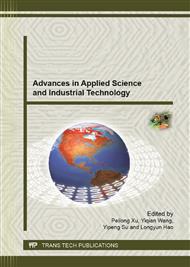p.151
p.157
p.161
p.165
p.170
p.174
p.178
p.182
p.186
The Study of Activity of Rare-Earth Doped Four Potassium Titanate Whiskers Composite Photocatalyst
Abstract:
In this paper, the high temperature was adopted to treat the composited photocatalysts. The effects of different heat treatment temperature, rare-earth and concentration rare-earth on photocatalytic activity were investigated. The results showed that the photocatalytic activity was better when potassium titanate whiskers were calcinated at 600 0C without rare-earth doping. The effect of potassium titanate whiskers doped neodymium ion was the best, the degradation rate could increase to 59.0%. When neodymium nitrate was 0.04g, the degradation rate of composites photocatalysts was the best. The photodegradation rate could reach 74.02%. And the degradation rate of 10 mg/L tetracycline at 20 0C could increase to 86.31%.
Info:
Periodical:
Pages:
170-173
Citation:
Online since:
September 2013
Authors:
Keywords:
Price:
Сopyright:
© 2013 Trans Tech Publications Ltd. All Rights Reserved
Share:
Citation:


